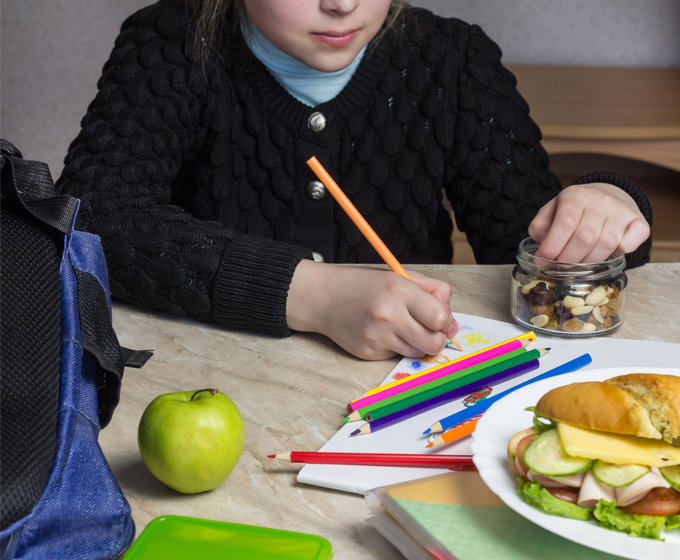
How do you feel when you’re hungry? Are you at your best? A new study by the UTSA Urban Education Institute (UEI) found that food insecure students in San Antonio struggled with distance learning and academic engagement more than their peers.
The findings linking food insecurity and learning signify how hunger and larger issues of family instability during the ongoing pandemic threaten student growth.
“It is well understood that we all have basic needs that must be met if we are to pursue and realize our fullest potential,” said Mike Villarreal, UEI director. “It is urgent that we as a community find effective ways to care for and respond to families in crisis so children won’t lag behind their peers in cognitive, emotional, and physical development.”
The research, as part of a multi-part Teaching and Learning In the Time of COVID-19 survey project, found that 26 percent of local K-12 students and parents surveyed said they were experiencing food insecurity, meaning food ran out and there was no money to buy more.
The UEI spent the spring and summer surveying almost 2,000 K-12 public school students, parents and teachers across eight Bexar County school systems for the overall project. This research is helping local education leaders plan and improve their operations during the pandemic.
Families in each school system reported experiencing food insecurity, with the highest rates of 49 percent found in Edgewood ISD and 41 percent in both Harlandale and Southwest ISDs. Other school-district-level data can be found in the report.
Bexar County’s pre-pandemic rates of food insecurity already were hovering at about 14 percent in 2018. That number nearly doubled for public school families by spring of 2020.
“A majority of our public school children depend on our public schools for food, safety and community. The pandemic not only stranded students, but also caused many of them and their parents (48%) to lose their jobs or suffer pay cuts,” Villarreal said.
Schools responded quickly with massive technology and meal distributions for students learning at home.
“Despite many obstacles and regulations by the federal government, districts pivoted quickly and offered free meals with little to no questions asked while physical campuses were closed,” Villarreal said. “Their efforts were heroic – and yet there is still more work to be done. Our research is intended to support our school leaders by providing them rigorous and actionable research and nurturing an ongoing community conversation about the challenges and solutions in education.”
Some of the key findings in the research report include:
- 26 percent of students and parents surveyed said they were experiencing food insecurity
- Families in each school system surveyed reported having experienced food insecurity, with the highest rates of 49 percent found in Edgewood ISD and 41 percent in Harlandale and Southwest ISDs
- A higher incidence of food insecurity was correlated with higher numbers of children in households
- Food insecure high school students were less motivated during distance learning. While food insecure high school students represented 20 percent of all high school students, they represented 65 percent of high students who said they never turned in assignments
- Food insecure high school students were also overrepresented among those who said they were never engaged by school lessons.


Leave a Reply